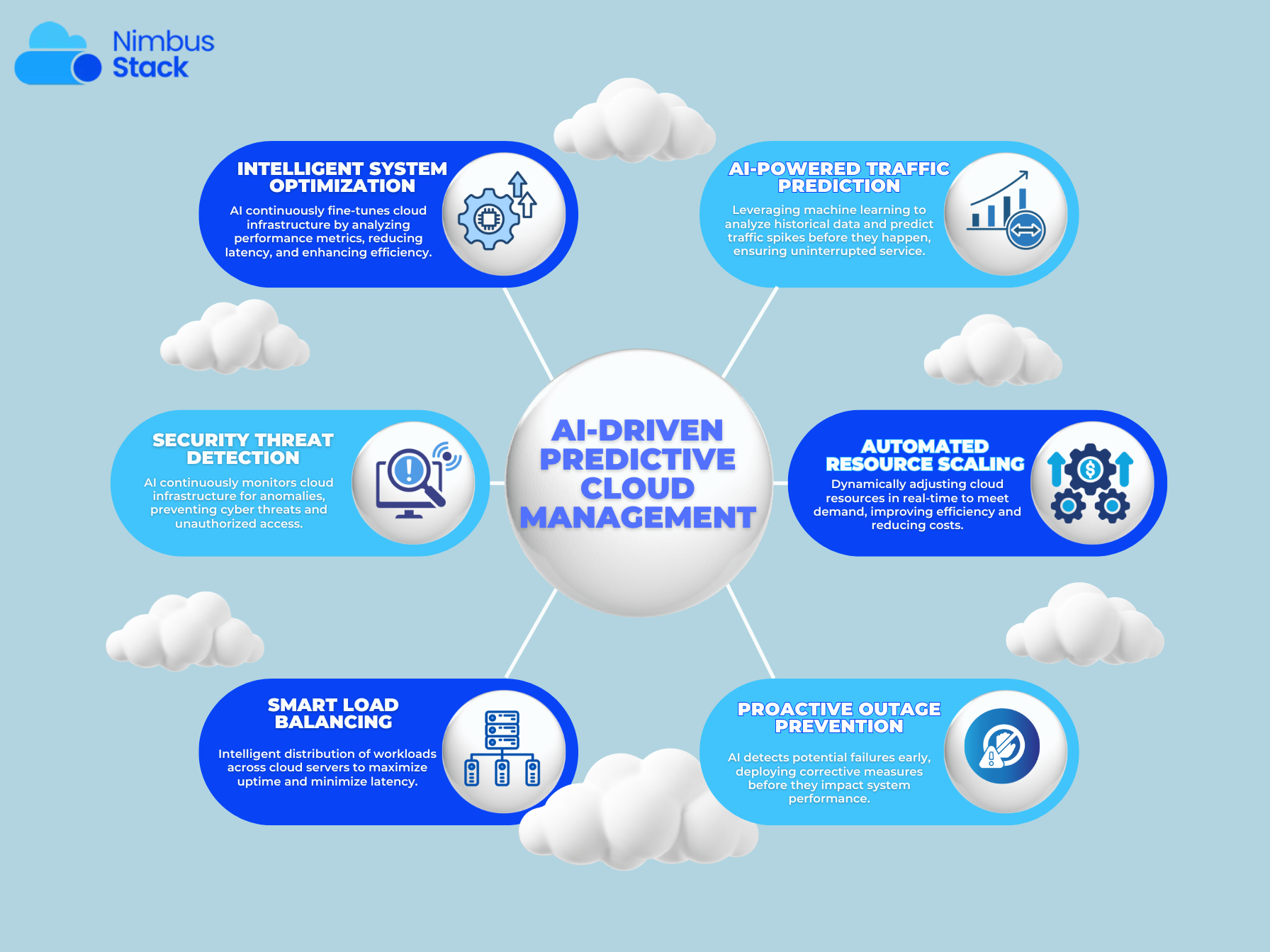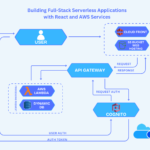In today’s cloud-native world, agility and efficiency are no longer nice-to-haves—they’re business imperatives. But as infrastructure becomes more dynamic, managing it reactively can lead to overspending, resource bottlenecks, and system outages. Enter artificial intelligence (AI): the game-changer enabling predictive infrastructure management in the cloud.
AI doesn’t just monitor your infrastructure—it anticipates what it will need next. By analyzing patterns in usage, workloads, and performance, AI helps forecast future demands, proactively allocate resources, and minimize disruptions. In this blog, we’ll explore how AI is transforming cloud infrastructure management and share practical ways to harness it in your environment.
Why Predictive Management Matters in the Cloud
Cloud environments are inherently elastic and complex, especially in multi-service or multi-cloud architectures. Manual monitoring and scaling can’t always keep up. Predictive management helps organizations:
- Optimize Costs: Prevent over-provisioning by aligning resources with actual usage patterns.
- Improve Performance: Anticipate and resolve performance bottlenecks before they impact users.
- Increase Uptime: Detect signs of impending failures early and trigger preventative actions.
- Enhance Agility: Free up IT teams from firefighting, allowing them to focus on innovation.
How AI Powers Predictive Cloud Infrastructure
AI-driven infrastructure management relies on machine learning (ML) models trained on historical and real-time data from your cloud environment. These models identify patterns, spot anomalies, and generate actionable forecasts.
Key AI Capabilities
- Predictive Scaling
- Forecast future traffic and automatically scale resources (e.g., EC2 instances, containers, or serverless functions).
- Helps maintain performance during traffic surges while minimizing idle capacity.
- Anomaly Detection
- Identify deviations in CPU, memory, network usage, or disk I/O that may indicate resource misuse or security threats.
- Trigger alerts or automated remediations.
- Capacity Planning
- Project infrastructure needs over time to guide provisioning, budgeting, and cloud purchasing decisions.
- Failure Prediction
- Analyze logs and metrics to predict hardware failures, degraded services, or application crashes.
- Cost Optimization Recommendations
- Recommend rightsizing, spot instance usage, or reserved instance purchases based on AI-driven analysis.
AI Tools for Predictive Cloud Management
1. AWS CloudWatch with Anomaly Detection
Leverages machine learning to detect unusual behavior in metrics like CPU usage or latency, enabling early detection of performance issues.
2. AWS Compute Optimizer
Uses ML to recommend optimal EC2 instance types and configurations based on historical utilization patterns.
3. Azure Advisor and Azure Monitor
Provide predictive insights and performance recommendations for Azure-based infrastructure, including VM sizing and workload balancing.
4. Google Cloud’s Active Assist
Delivers AI-powered recommendations for resource usage, cost savings, and operational improvements.
5. Third-Party Solutions
Tools like Datadog, Dynatrace, and New Relic offer AI-driven observability platforms that integrate with multi-cloud environments for predictive insights.
Use Cases in Action
1. E-Commerce Scaling During Flash Sales
AI forecasts traffic spikes based on historical shopping events, automatically scaling web servers and backend services to handle demand—avoiding crashes and lost sales.
2. Smart CI/CD Pipeline Management
By analyzing code changes, test results, and build metrics, AI can predict build failures or performance regressions and recommend fixes before deployment.
3. Proactive Cost Governance
AI models analyze daily cloud spend patterns and predict future costs, triggering alerts or automated budget adjustments before overruns occur.
4. Intelligent Disaster Recovery Planning
AI helps identify critical systems most vulnerable to outages and suggests replication strategies or backup frequency adjustments.
Best Practices for Implementing AI in Infrastructure Management
1. Centralize Your Data
AI models need clean, consistent data. Centralize your logs, metrics, and events using tools like Amazon CloudWatch, Azure Monitor, or the ELK stack.
2. Start with a Clear Use Case
Focus on one area—like autoscaling or cost optimization—and expand as you gain confidence and results.
3. Choose the Right Tools
Select AI tools that integrate well with your cloud platform and existing monitoring systems.
4. Establish Feedback Loops
Enable continuous learning by feeding outcomes (e.g., whether a prediction was correct) back into the AI models to improve accuracy.
5. Combine AI with Human Oversight
Let AI handle repetitive tasks and recommendations, but keep human experts in the loop for complex decision-making and policy enforcement.
Challenges to Watch Out For
- False Positives: Not all anomalies are threats. Use thresholds and filters to reduce noise.
- Data Silos: Fragmented data sources reduce the effectiveness of AI models.
- Model Drift: ML models need retraining as infrastructure patterns evolve.
- Security and Privacy: Ensure compliance when collecting and analyzing usage data.
Future of AI in Cloud Infrastructure
As cloud environments continue to grow in complexity, AI’s role will evolve from reactive monitoring to autonomous operations—what Gartner calls AIOps. We’re heading toward infrastructures that are not just self-healing but self-optimizing, capable of adjusting in real-time with minimal human intervention.
Conclusion
AI-driven predictive cloud infrastructure management isn’t just a futuristic concept—it’s a practical, powerful strategy for staying ahead in today’s fast-paced digital world. By leveraging AI, organizations can reduce costs, improve performance, and build more resilient systems.



